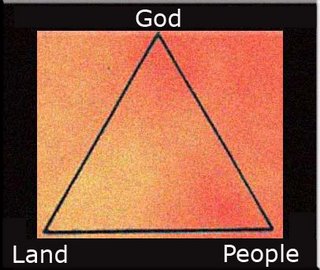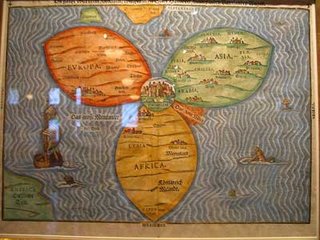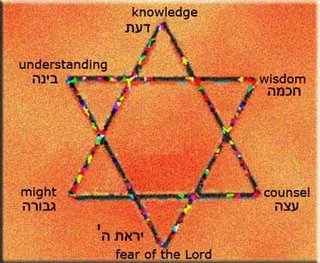 The following paragraph is from Dr. Asher Eder’s book The Star of David, which was published in 1987 in English in Jerusalem by Rubin Mass Ltd. The publication here is courtesy of Oren Mass
The following paragraph is from Dr. Asher Eder’s book The Star of David, which was published in 1987 in English in Jerusalem by Rubin Mass Ltd. The publication here is courtesy of Oren MassThis version includes corrections and new materials that do not appear on the printed version
However distant we may seem to be from unity and peace, we should not think that Yerushalayim, in the deep meaning of the word, is merely a future dream. Yerushalayim is actual and present, and everyone is confronted by it, or at least by the headlines it makes in the world press. By its very existence in both the material and heavenly planes, Yerushalayim is a cornerstone and a touchstone for the thoughts and deeds of all of us, as individuals and as nations. Moreover, it serves as the monument to a new generation characterized by understanding, harmony and peace. It is for this reason that "Zion" is not only an ethical/spiritual teaching, but also an expression of the unity of people, land and God, as revealed in the Torah.
What has been said so far with respect to the "daughter of Zion" (the people of Israel), is ultimately valid for all nations, for all are descendants of Adam.
Besides this common ancestor, men share much more in the teaching which comes forth from Yerushalayim than is usually visualized. While Christianity and Islam, whose adherents form more than half the numbers of Mankind, are generally seen as "daughter religions" of Judaism, very few people are aware of the Divine teaching's other influences on the world.
We read, for instance, that Abraham gave gifts to the seven sons he had from his second wife, and sent them to the East. Even if these gifts were only material gifts, as some scholars maintain, we can be certain that these sons carried with them the education they received in their father's house, and brought it to the countries of their destiny.
Then, King Solomon's wisdom became known so much so that "there came of all people to hear the wisdom of Solomon, from all kings of the earth...". We may safely assume that those who came to hear Solomon's wisdom conveyed to their peoples what they had picked up.
King Hiram of Tyre deserves to be mentioned specially in this context. While he was already "a lover of David all his days, he sent his servants unto Solomon" (1.Kings 5:1). They helped with their technical skills in the construction of the Temple, and on the other hand certainly learned from Solomon. One of the results was the development of what became known as the Phoenician writing. The latter had, then, its decisive impact on the Greek alphabet, as we saw already.
Another related event recorded in detail is the meeting of the Queen of Sheba with King Solomon. From the meeting, the Queen brought home not only what she'd learned from Solomon's wisdom, but, according to Ethiopian tradition, a child conceived by him. This child was to become Menelek I, founder of the Ethiopian dynasty which lasted until Hailie Selassi, the 257th descendant from Solomon.
We do not know whether Greeks, too, were among those who came to hear Solomon's wisdom but it is rather evident that some when during the period of the First Temple they got either directly acquainted with the Hebrew stile of writing, the Aleph-Beth which they transformed into their Alphabet (as hinted above in chapter 12), or whether they got this knowledge via the Phoenicians mentioned before.
Many centuries later, the dispersed tribes of the Northern Kingdom of Israel must have acted like another wave, spreading part of the teachings which came forth from Jerusalem. Prophet Hosea brings out this point when he compares Israel to Jezreel, God's seed, to be sown in the earth (2:24,25). It is remarkable that in the centuries following this dispersion, outstanding teachers appeared in different parts of the world. We may assume that they molded the Israelites' message into their respective national cultures, which had originated with Noah's three sons.
The famous maxim "Righteousness is the Foundation of the Throne", is not a Roman invention, as is often believed, but derives from the much earlier teachings of Kings David and Solomon.
After all these sparks, and many others, went out from Jerusalem and were scattered about the world, there ensued a turning towards Jerusalem which began with Israel's return to the Land of the Fathers in our days. This increasingly worldwide focus on Jerusalem, though often antagonistic, is part of the process of tikkun ha'olam, the restoration of the world to its Divine order.
Having once realized God's Kingdom on Earth, Jerusalem may well come to be regarded as the Temple, the Land of Israel as Jerusalem, and the rest of the Earth as Israel. Israel's role among the nations will then be similar to that of the Cohanim (priests) and the Levites among the people of Israel in the time of the Temple. That is, the nations will acknowledge and accept Israel's role as a "Kingdom of Priests" (Exodus 19:6; Is. 61:6).. While Israel is God's first born son, it will form with the other nations to be born afterwards the brotherhood of mankind under the fatherhood of the One Creator.
Modern Zionism has the same objective, for the regaining of the land is not its only goal; it has to be combined with the development of morality based upon the ethics and faith taught by the Torah. This building up of society, which Dr. Theodore Herzl set before us as a goal, is a perpetual process, the principle challenge for every generation. The idea of the early pioneers, expressed in the slogan "by building the country we build our true Selves", will be matched with the idea that "by building our Selves we build the country".
It is not that all the inhabitants of the Earth, or even of Israel, will become pure beings. Zionism is not a Utopian dream. Its thrust, expressed as faith and hope, is that the spirit of God's truth and righteousness will eventually replace the spirit of confusion, evil and destruction. Iniquity might still be apparent, but "it shall stop her mouth", and shall no longer be able to deceive.





